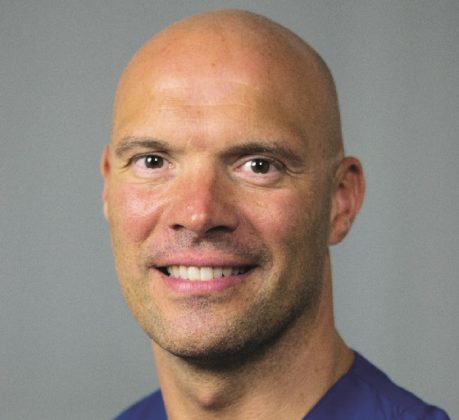Key Points
- The SURTAVI trial randomized patients at intermediate risk for aortic valve replacement to receive either TAVR with and without PCI using a supra-annular self-expanding valve, to surgical AVR with and without CABG.
- This is the first reporting of the five-year follow up data for the original trial, assessing both clinical outcomes and echocardiographic measurements.
- At five years, there was no difference in all-cause mortality, disabling stroke, valve endocarditis, or valve thrombosis.
The five-year outcomes comparing transcatheter aortic valve replacement (TAVR) to surgical aortic valve replacement (SAVR) in patients at intermediate risk for surgery were previously available for balloon-expandable valves. In a late-breaking session at the 33rd annual TCT conference in Orlando, Florida today, Dr. Nicolas M. Van Mieghem presented the five-year follow up data from SURTAVI to answer the same question for self-expandable supra-annular valves.

The trial design for SURTAVI is as follows: participants deemed to be of intermediate surgical risk for operative mortality were randomized to receive either TAVR with a supra-annular, self-expandable valve (Corevalve or Evolut, Medtronic) versus surgery. Participants were randomized by need for coronary intervention such that those undergoing TAVR received PCI and those undergoing surgery received CABG. The TAVR group contained 864 patients, and the surgical group 796. Participants had a mean age of 80 years old, almost half-female with STS scores of 4.5%.
Two Year Data Recap
At two years, there was no difference in all cause mortality or disabling stroke among the two groups (12.7% in either group, p =0.96). Likewise, there was no difference in death, MI, valve endocarditis, valve thrombosis, or heart failure hospitalization. Pacemaker rates were significantly higher in the TAVR group (30.9% vs. 9.8%, p<0.001), as was the need for reintervention (2.5 versus 0.5, p = 0.002).
Five Year Results
The five year results followed the trend set by the two-year data. There was no difference in all-cause mortality or disabling stroke in TAVR (31.3%) versus SAVR (30.8%) [HR 1.02 (95% CI 0.85 – 1.22, p = 0.85)]. There was non-significant trend toward lower disabling strokes with TAVR at 5 years. The secondary outcomes of death, cardiovascular death, reintervention, any stroke, MI, valve endocarditis, valve thrombosis, and heart failure hospitalization did not differ between the two groups from year 2 to year 5. When echocardiographic data were assessed, TAVR outperformed SAVR, with higher effective orifice areas and lower mean gradients at every stage of follow up. Finally, there were no difference in New York Heart Association class symptoms or total Kansas City Cardiomyopathy Questionnaire scores between the two groups at 5 years.
The authors concluded that these new data further support the safety and favorability of TAVR in patients at intermediate risk for aortic valve replacement. During a post-presentation panel discussion, Dr. Patrick O’Gara reminded the audience that the average age of participants in the trial was 80. He warned that data could not be extrapolated to younger patients, stating “It’s not really fair for us to say 60-year-old patients will fare equally well or that the tradeoff between a pacemaker implant and the need for a repeat procedure is perceived the same in folks who are 15 years younger”. Regardless, the panel were impressed with the data, and agreed that TAVR has shifted higher in both patients and clinicians’ calculus for aortic valve replacement.



Leave a Reply
You must be logged in to post a comment.